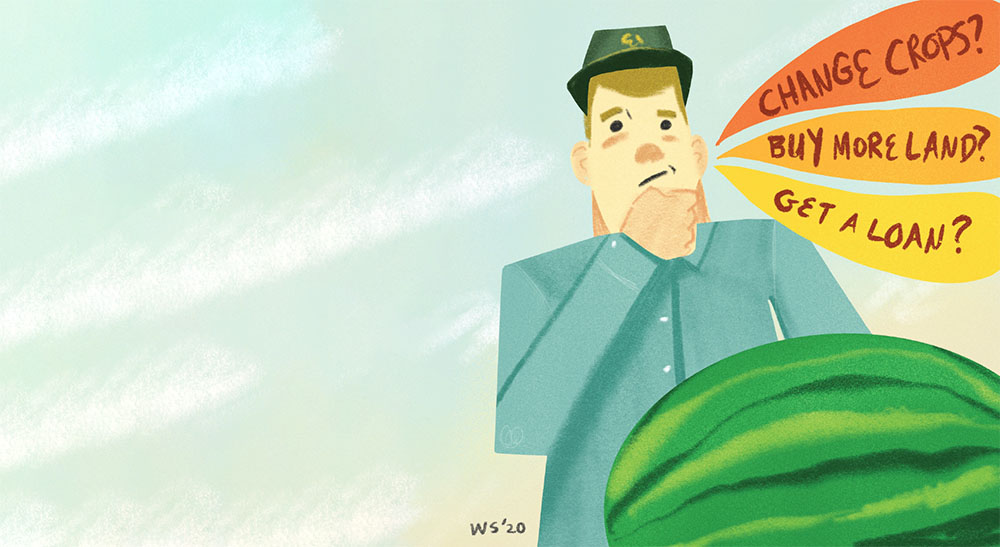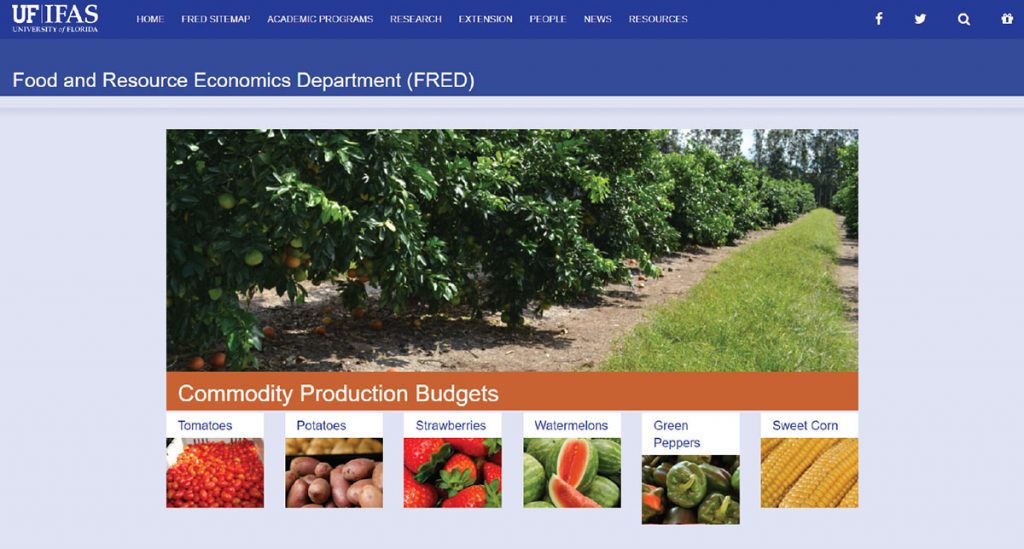
By Kimberly L. Morgan and Tara Wade
Wanna go fishin’? Have you ever wondered why we don’t ask who wants to go catching fish?
Entrepreneurial adventures in farming may be compared to the distinction between fishing and catching any fish at all, regardless of hours spent throwing out a line, varying techniques, bait types, pole qualities and past experiences at previously abundant locales. Similarly, the farm financial planning process tends to be viewed as murky and mysterious. As a result, financial planning is often underutilized and misinterpreted. This is especially true when farmers are looking to make changes in existing operations or venturing into new enterprises.
While financial documentation is viewed as a tedious task, it is the bedrock of any decision about farming. Further, any future financial decisions should be made in tandem with production, marketing, legal, regulatory and human resource management to ensure all departments are considered prior to the investment.
Business risks are defined as “uncertainty that matters.” This article highlights key aspects of the enterprise budget useful to address and mitigate the uncertainties that are inherent to entrepreneurial pursuit of farming for profits.
Enterprise budgets are long-run planning tools. They differ from other budgets, such as income and cash flow statements, balance sheets and owners’ equity statements, which are used to study past farm financial performance. Enterprise budgets give farmers the numbers needed to make timely allocations of resources (land, labor and capital) specific to growing conditions that capture the feasible production and marketing costs and revenues.
USEFUL FEATURES
A key benefit to the enterprise budget is the ability to assess the opportunity costs, captured as interest paid on operating costs. Economic opportunity cost measures the entrepreneurial value of the enterprise by calculating what farmers must give up to get what they want the most.
One alternative to borrowing annual operating capital and paying a 6 percent interest rate on the loan is to invest those dollars and earn a 6 percent return. The interest rate on the operating loan is charged to the enterprise in the budget to ensure the farmer is recovering this cost. Knowing what they are giving up allows farmers to make informed decisions on whether to choose a new enterprise.

The enterprise budget contains another valuable risk mitigation tool: It allows farmers to examine whether they can stretch their resources into a new venture. Fixed costs, also described as ownership costs, represent long-term expenses that must be paid every year regardless of what commodity is produced or if any are produced at all. A fixed-cost charge in the form of returns to overhead and farm management is represented by a percentage of total operating costs. This percentage captures returns to the farmer’s own long-term investment of their expertise and efforts into this enterprise. Economics tells us there is no such thing as a free lunch, and this is the only financial tool that reminds the farmer to make sure any new activity results in a paycheck to cover their own involvement with the enterprise.
A motivating factor for tackling a new enterprise is the desire to find new ways to use existing resources that are costing the business money yet sit idle all or part of a year, such as equipment, buildings or irrigation systems. The enterprise planning tool allows a farmer to adjust the variable (operating) and fixed (ownership) cost numbers to represent their existing resources and expenses. This can easily be done by utilizing information/numbers from the farm’s historical financial statements.
Another valuable feature of the enterprise budget arises when farmers choose to spend time studying and learning how to utilize the tool to plan for future profits. Specifically, annual updates to the budgets capture information related to changes in input prices and/or technology.
Examples of changes to input prices important to the farm budget are fuel or fertilizer costs resulting from adjustments in trade, labor or regulatory policies. Similarly, changes in technology such as new equipment features and/or availability can significantly impact overhead/fixed costs. Moreover, predicted yields may be changed to allow for varying physical conditions across the state, such as soil health and weather patterns that are specific to a farm location. Estimated costs of materials may be adjusted to capture savings from purchasing inputs in bulk for use across other farm activities or sharing packing and harvesting costs through cooperative arrangements.
Estimated revenues are based on average market prices and can be altered to accurately identify prices received by an individual farmer year over year at each market outlet. This includes sales made through a broker, at a roadside stand or online farmers’ market, or via direct marketing connections like restaurants or retailers.
From the viewpoint of an economist, assessing benefits resulting from the investment in a new enterprise extends beyond the explicit gains in profit. Farmers are often motivated by the implicit gains in managing business risks that may be achieved when adding a new enterprise.
For example, the ability to employ labor year-round may ensure continued access to staff. This reduces the time and stressors related to attracting and training new people repeatedly, while building trusting relationships between owners and employees. This extends to finding ways for the next generation to stay on the farm through expansion into enterprises that provide the foundation for a long-term career in the family business.
INTERNET RESOURCE
To help organize the math behind these economic choices, the University of Florida Institute of Food and Agricultural Resources (UF/IFAS) provides enterprise budgets for a variety of Florida-grown commodities. These decision tools are built collaboratively with economists, horticulturists and farmers who share lifetimes of experience from the fields to provide a baseline of inputs and outputs for an operation.
Visit fred.ifas.ufl.edu/extension/commodity-production-budgets for more information and to access the UF/IFAS Commodity Production Budgets. These tools will help you assess your farm’s readiness to capture your next entrepreneurial field of green. Available enterprise budgets include potatoes, strawberries, tomatoes, green peppers, watermelons, sweet corn, cabbage, tropical fruit, beef cattle and forages, tropical ornamentals, tropical vegetables, citrus and cucumbers.









